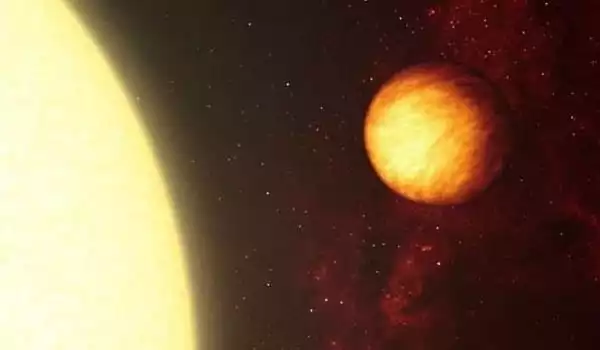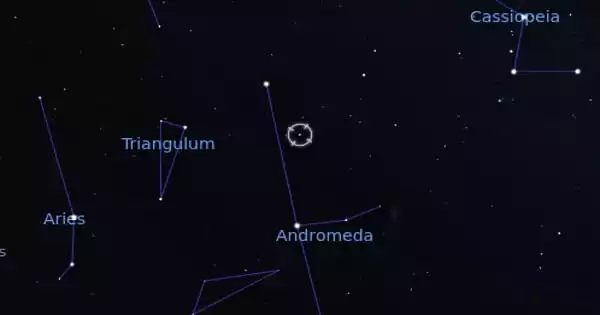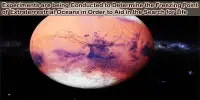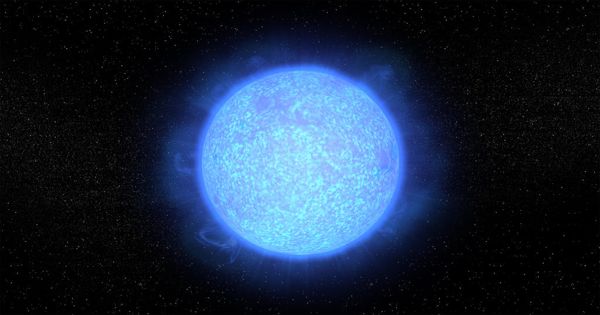Upsilon Andromedae b is an extrasolar planet located in the constellation Andromeda, approximately 44 light-years from the Sun. It is an exoplanet in the form of a gas giant that orbits an F-type star. Every five days, the planet orbits the solar analog star Upsilon Andromedae A. It has a mass of 0.6876 Jupiters, takes 4.6 days to complete one orbit around its star, and is 0.059222 AU away from it.
In 1996, it was announced that it had been discovered. Geoffrey Marcy and R. Paul Butler discovered it in June 1996, making it one of the first hot Jupiters discovered. It is also one of the first direct detections of a non-resolved planet. Upsilon Andromedae b is the system’s most distantly located planet.
Upsilon Andromedae is a binary star located in the constellation Andromeda about 44 light-years away. A yellow-white dwarf star (Upsilon Andromedae A) similar to the Sun and a dim red dwarf star (Upsilon Andromedae B) are found in the system (Upsilon Andromedae B). The two stars are approximately 750 times as far apart as the Earth is from the Sun.
NameExoWorlds, a process for giving proper names to certain exoplanets and their host stars, was launched by the International Astronomical Union in July 2014. The new names were chosen through public nomination and voting. The IAU announced in December 2015 that Saffar was the winning name for this planet. The winning name was proposed by Morocco’s Vega Astronomy Club and honors Muslim Spain’s 11th-century astronomer Ibn Al-Saffar.

Discovery
The variations in its star’s radial velocity caused by the planet’s gravity were used to detect Upsilon Andromedae b. The variations were discovered by taking precise measurements of the Doppler shift of the spectrum of Upsilon Andromedae. The existence of the planet, along with 55 Cancri b and the planet orbiting Tau Boötis, was announced in January 1997.
Upsilon Andromedae b, like 51 Pegasi b, the first extrasolar planet discovered around a normal star, orbits very close to its star, closer than Mercury does to our Sun. The planet’s orbit takes 4.617 days and has a semimajor axis of 0.0595 AU.
The radial velocity method used to detect Upsilon Andromedae b has a limitation in that it can only find a lower limit on the mass. Depending on the inclination of the orbit, the true mass could be much greater. Using high-resolution spectroscopy, a mass of 1.70 MJ and an inclination of 24° were later discovered.
Physical characteristics
Given its mass, Upsilon Andromedae b is most likely a gas giant with no solid surface. Spitzer Space Telescope measured the planet’s temperature and discovered a difference of about 1,400 degrees Celsius between the two sides of Upsilon Andromedae b, ranging from minus 20 to 230 degrees to about 1,400 to 1,650 °C. Because of the temperature difference, scientists believe Upsilon Andromedae b is tidally locked, with the same side always facing Upsilon Andromedae A.
Sudarsky predicted reflective clouds of silicates and iron in Upsilon Andromedae b’s upper atmosphere based on the assumption that the planet’s composition is similar to Jupiter and that its environment is close to chemical equilibrium. Instead, the cloud deck absorbs the sun’s radiation, creating a cooler stratosphere between it and the hot, high-pressure gas surrounding the mantle. The outer shell of the dark, opaque, hot cloud is thought to be made of vanadium and titanium oxides, but other compounds such as tholins cannot be ruled out just yet.
The chemical elements in the atmosphere can be studied by locating their absorption lines in the planet’s thermal spectrum, which has a peak at infrared wavelengths at typical planet temperatures. Only water vapor has been detected so far on this planet, while carbon monoxide and methane are still below the detection limit.
















